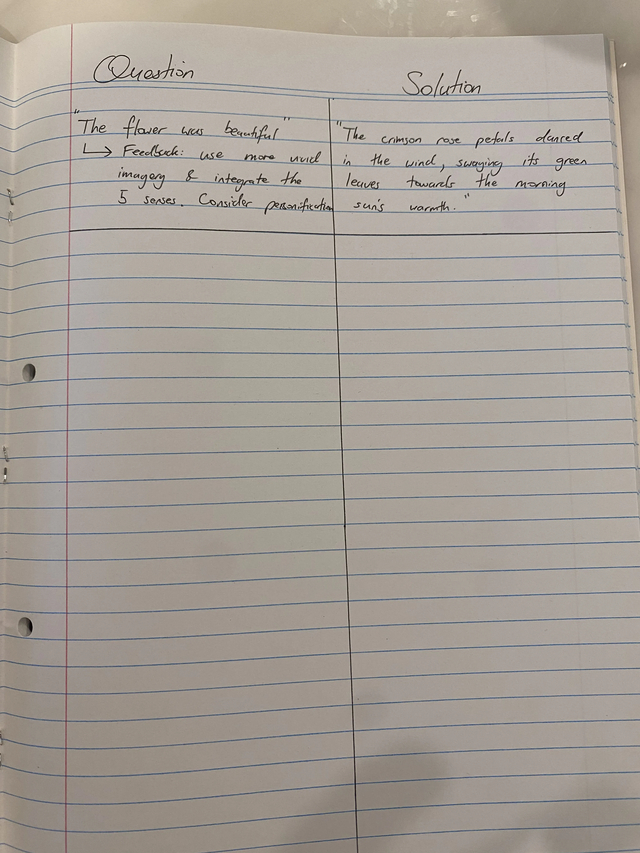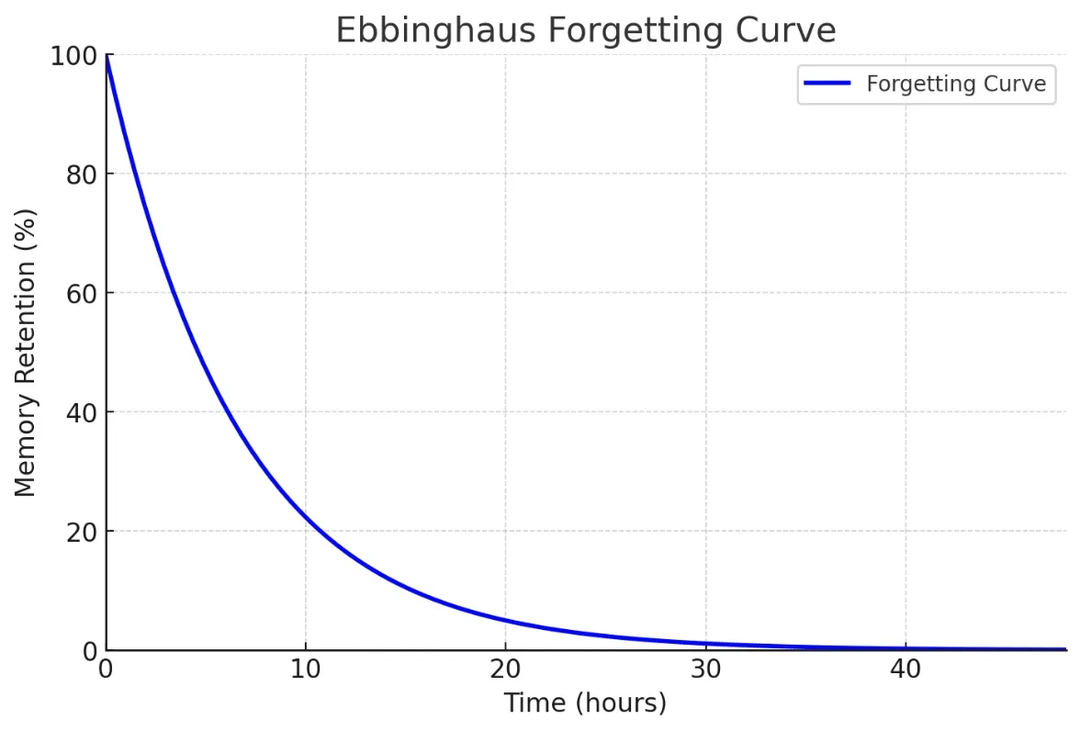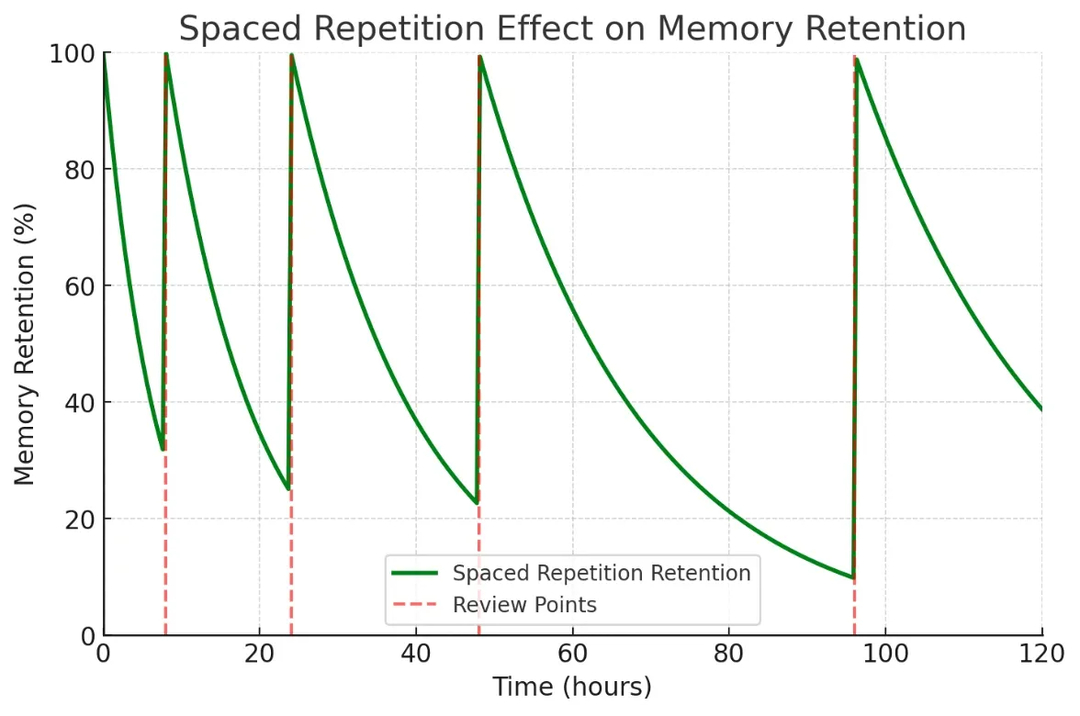How Do I Ace My Exams? The Complete NL Study Guide To Dominate Your Exams
Author: Nelson Luo (Founder & Principal)
- Ex-North Sydney Boys (Rank 1st NSW)
- 98.20 ATAR (Australia's Top 2% )
- 100% UNSW Co-Op Scholarship Recipient
- Student Mentor of 100+ students
“If you fail to plan, you are planning to fail!” – Benjamin Franklin.
Benjamin Franklin was a founding father of the United States, renowned inventor, scientist, diplomat and writer. If Franklin relied strongly on effective planning to create a significant impact on the world…
…it would be unwise to think that your exams can be conquered easily without planning your structured study strategy.
In this complete NL Study Guide, I will cover 6 powerful study strategies that helped me ace the Selective Test and graduate within the top 1.8% of Australia from the 1st ranked NSW school.
Truthfully, these study strategies are useless if you do not actively apply them into your schedule. Simply reading this article is not enough to improve your study strategy. Remember, learning is NOT simply acquiring knowledge and understanding new things. Learning is the process of changing your behaviour under the same condition.
The only way to know if you have actually learned and improved your study strategy is to reflect. After reading this article, ask yourself this: Will I change my study habits? And if not now, when?
I wanted to strongly emphasise this as a preface before diving into my study guide. It is extremely common for students to simply read and agree with what they have read–then forget to actually take action themselves (which defeats the purpose of reading).
Consider this article a source of knowledge. Therefore, reflect on what Alex Hormozi once stated:
“Knowledge is simply about having the right information. But if you don’t use that right information, or apply it in a tangible way, then it doesn’t actually impact your life.”
These 6 following strategies worked effectively for me. However, please do try and adapt them based on your own personal preferences. Everyone is different, and one size definitely does not fit all.
Study Strategy 1: The Power Of Teaching Someone Else
The process of ‘active recall’ requires you to make the mental effort to try and remember something you've learned once before, which is one of the most powerful ways to retain knowledge. Most students apply active recall by grinding through practice questions. Few have delved into other learning methods beyond simply writing.
Example scenario using active recall: a student learns about the epistrophe technique in their NL English Academy classes for the first time. During homework, the student tries to recall the technique (without looking back on the lesson theory content) and use it in the writing activity. This is ‘active recall’ in written form.
In my experience, the MOST optimal way to apply ‘active recall’ to remember a concept is not through written form. It’s through teaching someone else who is unfamiliar with the concept.
Here’s how you should approach teaching someone else to apply ‘active recall’:
- Find someone to teach (a sibling, study partner, parent, relative, friend, or even your pet as a last resort option).
- Pick a topic that you want to revise the content for. Quickly skim over the theory within the topic.
- Explain the topic in the clearest, most sequential and simplest way possible to the person you are teaching.
- Then, ask them to explain the concept back to you. If they have understood what you have explained, then you have understood it too. If they are confused, re-read the theory and explain it to them again in a clearer way until they understand it.
- Repeat the above steps with other topics (or for as long as the person you are teaching is able to sit for)
Not only is this strategy a fun way to retain knowledge, I’ve found that it’s actually more effective than grinding through general textbooks or passively re-reading content. This is the power of class discussions and engagement when learning.
Yes, fluency and repetition is beneficial–however only once you have completely understood the newly learnt theory. Once you have understood new content through ‘active recall’, hone down your exam technique with specific question types (Study Strategy 4).
I’ll share a personal anecdote with you.
I attended the 1st ranked NSW selective high school. In our student culture, it became common for top-performing students to teach others who needed more help during lunchtime breaks. Aside from camaraderie, this mutually benefitted not only the student that needed extra help, but for the top-performing students too.
It wasn’t something that the teachers told us to do. It was just something that every grade did. I had a group of friends who all held each other accountable to a high level of discipline, and a large part of what we did included teaching one another to revise. I’m fortunate to have experienced such a unique student culture which has provided me the ability to share this strategy with you from the heart.
Study Strategy 2: Create Your Personal ‘Mistakes Book’
Creating a personal mistakes book was one of the most important things, if not THE most important thing I did to become self-aware of what topics I need to improve in. A mistakes book is essentially your personalised revision manual. It’s a textbook created by you, reviewed by you and studied by you.
Instead of blindly attempting general textbook questions without any thought of why you are attempting those questions… you are creating a compass that directs you towards your gaps and areas of weaknesses. Imagine it as a map directing you to the treasure (scoring top marks) at the end of the adventure journey (your studying).
Creating a mistakes book does 3 things:
- Identifies EXACTLY where your learning gaps are through specific documentation.
- Ensures that you DO NOT forget what your skill gaps are (given that you actually study your mistakes book).
- Clarifies what topics and subjects you should be prioritising when studying for your exams.
Now that you know exactly why I recommend creating a mistakes book, here’s how to create and use one effectively:
- For every single subject, purchase a blank exercise book and name it “Mistakes Book” followed by the name of that specific subject.
- Separate each page into two columns. Column 1: “Questions”. Column 2: “Solutions”
- In column 1, write down every single question that you have got incorrect, whether it be in general exercises, mock exams, past papers, etc. Do not write the solution just yet. For writing tasks, write down the specific critical feedback that you have received from your tutor or teacher (for NL English Academy students, please note down all critical in-class feedback, critical end-of-term exam feedback, and also all critical feedback from your outside-class writing submissions)
- After every lesson and question set that you attempt, fill out column 1. Keep consistent with filling it out and consider it just as important as doing the questions themselves.
- At the end of each week, review every mistakes book and fill out column 2 (the solution). Ensure you have applied the feedback purposefully to improve your new solution.
- You must re-study past mistakes and re-attempt them all over again as your exams approach. Use your mistakes books as a revision guide alongside attempting mock exam/practice papers.
(Example layout)
In my opinion, there is no point continuously writing out papers or grinding through countless practice papers if you are not actively reviewing your mistakes in a structured & trackable way. The mistakes book provides you a self-trackable method of ensuring that your previous skill gaps are purposefully resolved and keeps you aware of what you need to improve on. Ensure you prioritise this alongside learning new theory and practicing, to optimise your knowledge retention whilst revising.
For our students reading this, you will already know that NL English Academy tutors annotate detailed feedback all throughout your individual classwork and homework each week. You should refer back to your document as one source of 'mistakes' that you can add to your mistakes book.
All in all, you will have more ownership and agency over your own academic skill progression.
Study Strategy 3: ‘Spaced Repetition’ Revision Strategy
Spaced repetition is the process of revising content at certain time intervals after first learning something new. This strategy is most powerful when implemented alongside revision sessions. I’ll be analysing this strategy with data and logic.
The purpose of this strategy is to optimise on how much information you retain over time, and tackle Ebbinghaus’ ‘Forgetting Curve’. Especially as you progress into the older grades towards year 12, the amount of theory and content to be memorised in a short time period can often be overwhelming.
The above ‘Forgetting Curve’ illustrates theoretically how quickly humans forget information after immediately learning something new over time. Visually, you can already see that most information loses retention after 10-15 hours.
So how can we stop this from happening?
Apply the spaced repetition strategy to bring your memory retention back to 100% in set intervals, until long term memory retention naturally declines but at a decelerating rate. Here's what spaced repetition looks like on a graph:
The red lines indicate when you should be revising (even briefly reviewing) a specific piece of content after learning it for the first time. These review sessions effectively ‘catch’ the drop in memory retention to bring it back up.
For example: if you learned new content at school and didn’t revise when you were home afterwards, you would have forgotten most of the information. Even just a brief revision session after school will bring your knowledge retention back to 100% before you sleep. Briefly revising yesterday’s content today will also be crucial to ensure that information is retained for a longer time period. Then, repeating this in longer time spans only reinforces knowledge even stronger.
So, every single revision session will have theory learned on the current day, theory learned yesterday, theory learned 2 days ago, theory learned 4 days ago, 8 days ago, 16 days ago and 32 days ago (rule of thumb: x2 multiple).
Everyone knows that revision is important, but few know how to actually revise strategically. Applying the ‘spaced repetition’ strategy towards daily revision will make it significantly easier on exam day to prepare without the need to ‘re-learn’ past content.
Study Strategy 4: Familiarise With Strict Exam Conditions
Closer to your exams, familiarising yourself with strict exam conditions is beyond crucial. A lack of familiarity is like finding your way out through a jungle without directions. In your mind, you may be thinking: it sounds straight forward enough, to just attempt past exam papers, right?
Countless parents make the mistake of thinking that their child is familiarising themselves with exam conditions by simply just doing past exams under time pressure. Yet, time pressure is only a single facet of the exam condition.
Consider that real exam conditions also include:
- A new environment without electronics, TV in the back, or other random books/toys beside.
- Other students and exam invigilators monitoring you.
- Only selected items allowed (clear bottle, pen, etc).
To mimic strict exam conditions at home, emphasis needs to be placed on setting up an ‘exam style’ environment. Here’s how I would create a strict ‘exam style’ environment:
- Find a new desk that is solely used for attempting practice papers under exam conditions. Do not sit at your usual study desk, or in your room. The more unfamiliar you are with the location, the better.
- I would recommend parents to sit and be in the vicinity of your child during the exam in silence. This is to mimic the feeling of having an exam invigilator’s presence in the room.
- Have a clock/iPad at the end of the room to mimic the exam clock. Ensure it is out of reach of the child and on do-not-disturb if you are using an electronic device.
- Change into your school uniform. This can help place you mentally into taking the practice paper seriously.
- Parents should read out exam instructions before the practice exam to replicate the process of exam briefing before the actual exam.
The more ‘real’ the strict exam condition is, the more uncomfortable it will be for students. Yet the more uncomfortable it is when practicing, the more comfortable students will feel on the actual exam day.
“Be willing to be uncomfortable. Be comfortable being uncomfortable. It may get tough, but it's a small price to pay for living a dream.” – Peter McWilliams.
The real exam is not comfortable at all. It’s normal to feel stress, anxiety, and the exam jitters. I used to constantly tap my pen and shake my legs when I sat down.
However, the goal of this strategy is to eliminate the excess stress to an optimal stress level, through being comfortable with discomfort when practicing (I wrote more about this in my article on exam preparation).
Study Strategy 5: The Pomodoro Timing Technique
When I was younger, I used to try and sit for as long as I could to complete the work that I had to do ‘quickly’.
As I grew older towards the end of high school, I came to the realisation that pushing through work in one sitting was counterproductive. My effort was no longer 100% channelled into my study, but rather, it was channelled into trying to stay focussed and not zone out. Oftentimes, I came to a point where I would have to re-read the same question over and over again–and yet I would still not absorb what the paper was asking me to do. Reflecting back, I wasted a lot of time studying inefficiently and it was also mentally exhausting. As mental exhaustion prolongs, you can fall into the risk of burning out.
That’s where the pomodoro timing technique comes into play.
The pomodoro technique is a study timing strategy that optimises your cognitive function while studying, by prioritising active and purposeful breaks. As a preface, this technique must be considered alongside the ‘spaced repetition’ strategy. However, it should not be used when attempting practice papers under strict exam conditions.
The pomodoro technique follows the below sequence:
- Identify a task or tasks that you need to complete.
- Set a timer for 25 minutes.
- Work on a task with no distractions.
- When the alarm sounds, take a 5-minute break.
- Repeat the process 3 more times.
- Take a longer 30-minute break and start again.
By prioritising rest between shorter study sessions, you can avoid the mistake I made of putting effort into trying to stay awake rather than studying itself. The pomodoro timing technique places you into a frame of mind where you know that your study session has a pre-set finish line, which motivates you to complete your work within the time frame without distractions.
Personally, it allowed me to put 100% effort into my work, without being distracted by the thought of when I was going to get tired, because I knew my rest break was coming soon.
On a side note, ensure that you are taking your rest seriously by actively resting. Actively resting means that your mind is not stimulated by anything else. No electronic devices, social media, Rubik's cube, chess, or any other activity that takes your mind away from thinking about nothing. As you place your timer on for your resting time, remove yourself from the room that you are studying in. I prefer to go on a short walk (and appreciate nature), do some push-ups in another room, breathing exercises outside, or play with a pet.
Study Strategy 6: Sport Is Non-Negotiable
Back in year 12, I still played competitive football every Saturday morning to represent my school, North Sydney Boys. Near the end of the season, one of our final matches was two days before our first HSC exam. Whilst others were pondering whether to skip the match to study instead, the thought of skipping did not cross my mind once.
(My proud North Sydney Boys Falcon Football team at 8am on a Saturday morning. NL English Academy now is the main sponsor of the NSBHS football club, which is such a full-circle moment giving back to the school that helped me grow ❤️)
Many parents often fail to recognise how exercise and sports can actually improve a student’s exam performance through fostering a growth mindset and other transferrable values. Personally, if I didn’t compete in sports in year 12, I wouldn’t have achieved as high of a mark (read our article by Jason Ho on how competitive sports boosts marks). It’s an opportunity for students to release endorphins and have a good time with their friends (in team sports), and ultimately a way to keep your mental health positive. You can even think of it like a reward for the hard work you’ve put in during the week.
I’ve seen parents cut sports from a student’s schedule because there’s ‘not enough time’. Let’s break this incorrect fallacy down from a logical perspective:
In a week, let’s assume that the optimal student schedule that prioritises top marks and overall life development includes a balance of study, a social life, sports and rest. Therefore, filling up a schedule with ONLY studies and deleting the other essential aspects will make a student unbalanced. From personal experience observing my peers and students, an imbalanced schedule leads to increased stress, risk of burnout, and overall lower study productivity.
Additionally, for peers and students I’ve observed who removed sports and a social life from their schedule to completely focus on studies, it's uncommon for them to spend all of their waking hours studying. Even though that’s what they’ve planned for themselves. They may spend an hour a day (or more) scrolling on social media as a ‘break’, play games on their phone/computer, procrastinate with the thought of needing to study, and not actually study with an effective study strategy.
Therefore, I believe it is incorrect to remove sports and a social life if you think it is going to distract you from studying. The first thing to cut out is procrastination, gaming, social media scrolling. If you do any of the prior three for more than 30 minutes a day (be honest with yourself), then you have the time to pick up sports. If you don’t pick up sports, don’t blame it on a lack of time. The truth is, you don’t prioritise it enough over scrolling, gaming and procrastination.
I notice one common trait within students who top the cohort in their marks. They are optimisers on all aspects of life, with studies merely being part of it. In other words, they are all-rounded, and strive to achieve high in not only their studies, but sports, communication skills, confidence, organisation, and other personal values.
On a side note, in order to balance exercise and studies, prioritising structured sleep is crucial for both physical and mental recovery. I recommend sleeping at the same time every night, then also waking at the same time each morning. A minimum of 8 hours is non-negotiable–and if you organise your time effectively enough in advance (using a study strategy), you’ll be able to sleep 8 structured hours of sleep each and every night until the end of high school.
How To Create Your Study Strategy
It is vital to find a balance between each of these strategies and find what works best for you. Keep testing out these study strategies depending on how close/far your exams are. My personal preferences:
- I prefer to apply the pomodoro technique together with using my mistakes book to revise consistently.
- After learning new content for the first time, I would consider spaced repetition and using the mistakes book the most important strategies.
- I will also only familiarise myself with timed conditions after I understand all theory, which I revise with both my mistakes book and spaced repetition to revise continuously.
- I also prioritise strict timed conditions closer towards my exams, which means that I won’t be applying the pomodoro technique then.
- For topics that are more difficult for me to understand for the first time, I will try and teach someone else to ensure that my understanding of theory is concrete, so that I’ll be able to provide an exemplar solution in my mistakes book when reviewing the theory again at the end of the week.
- Optimising on exercise and structured sleep is a non-negotiable for remaining consistent with your optimal study strategy.
If you’ve read this far, I’m wishing you the very best for your academic journey, and I hope this article has been valuable to you. On an ending note, I know it may be difficult adjusting to new study strategies at first, but always remember that all new habits are built brick-by-brick. Lay down each brick consistently to rebuild yourself every single day.
You must strive to be the Genghis Khan of your academic journey, conquering every exam that comes your way.
Thank you,
Nelson Luo
Founder & Principal, NL English Academy
We're proud to be the main sponsor of North Sydney Boys High School Football Club.
- Since 2025 ❤️
© 2025 NL English Academy. All Rights Reserved | Privacy Policy | Terms & Conditions |







